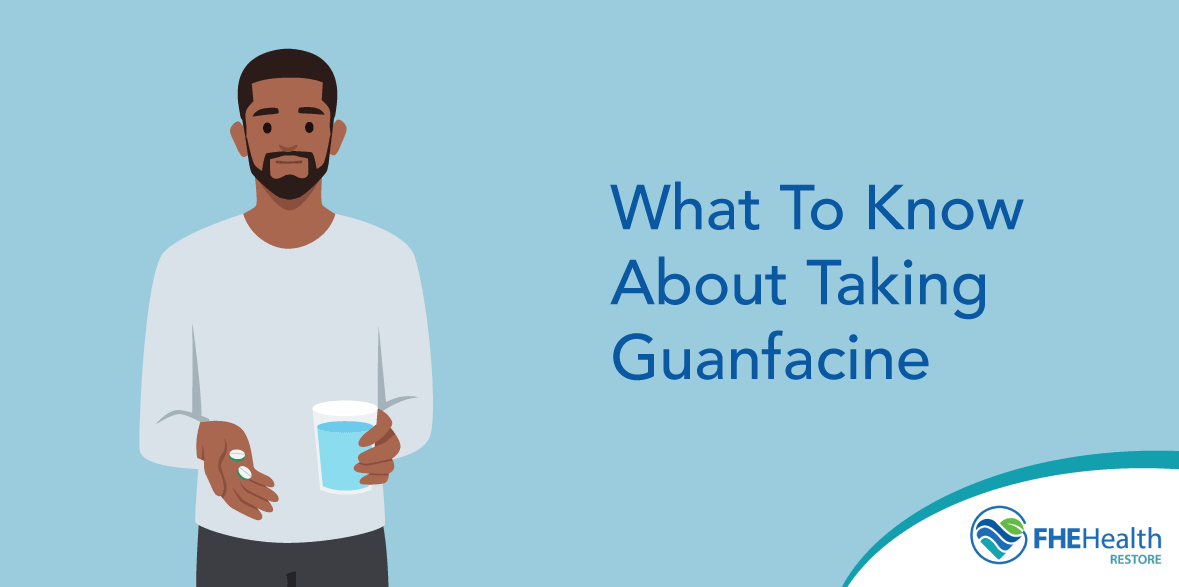ADHD (Attention Deficit Hyperactivity Disorder) is one of the most common neurodevelopmental disorders in America, affecting both adults and children alike. According to the CDC, 8.7 million adults and one in nine children in America have ADHD. An early diagnosis in childhood can help form an effective treatment plan into adulthood.
Research has shown a reduction in ADHD symptoms in children who use the FDA-approved drug guanfacine. As part of a doctor-prescribed plan of treatment, guanfacine (also known by its brand names Intuniv and Tenex) may help improve your child’s lifestyle and reduce the symptoms of this common disorder. This medication is typically prescribed when stimulants are not an option or as a second, adjunct medication alongside a stimulant.
Introduction to Guanfacine and Its Uses
There are two types of Guanfacine on the market, Tenev and Intuniv, both of which are non-stimulant medications. While Tenev is an immediate-release oral pill used for treating high blood pressure in adults, Intuniv is the slow-release version of the pill used to treat the symptoms of ADHD in children ages six to 17.
Guanfacine is an effective alternative for children who cannot take stimulant medication such as Adderall and Ritalin as part of their ADHD treatment plan. It’s also an effective medication option for adolescents with substance use issues, medical disorders, and other contraindications. Although it’s not quite as powerful as stimulant medication, studies show that it’s better than a placebo.
So how does guanfacine work? To treat ADHD, guanfacine extended-release tablets should be taken orally once a day. The tablets affect the prefrontal cortex of the brain, which regulates thoughts and feelings, impulse control, mood, and the ability to plan and organize.
Common Side Effects and Considerations
Guanfacine is often a go-to for children who are not able to take stimulants. It’s worth noting that the medication is the most effective in children ages 12 years and younger, even though it’s available for children up to 17 years old. Before starting treatment, there’ll be a health screening to reveal any underlying heart and medical issues.
The most commonly reported side effects are sleepiness and dry mouth. Other common side effects include:
- Fatigue, low energy levels and exhaustion
- Sedation
- Nausea and stomach pain
- Headaches
- Constipation and digestive issues
More uncommon side effects include:
- Anxiety and nervousness
- Tremors
- Hallucinations (more common in children)
- Sweating
- Chest tightness and
- Mood swings, irritability and short-tempered
- Decreased appetite
Side effects are usually mild, but if you or your child experience ongoing side effects after the initial adjustment period of one to two weeks, you should consult your healthcare provider. This non-stimulant medication is largely considered safe and does not have a black box FDA warning.
How Guanfacine Works in Managing Conditions Like ADHD
Those with ADHD can find it challenging to focus on tasks, frequently get distracted, battle to regulate emotions, prioritize tasks and time, and struggle with organization. Guanfacine calms the nervous system by targeting and stimulating the alpha-2A adrenergic receptors, thus regulating the flow of the norepinephrine neurotransmitter that is responsible for impulse control. The medication relaxes blood vessels and helps receptors in the brain better regulate emotions. Because of its effect on the brain, guanfacine can also alleviate nightmares, PTSD, and other anxiety disorders.
Guanfacine extended-release tablets can be used as part of a comprehensive treatment program to help manage behaviors.
The short-term use of Guanfacine Intuniv in adolescents can help with improving:
- Concentration and focus
- Impulse control
- Mood regulation
- Anxiety
- Aggression and hyperarousal
Guanfacine is not a cure-all and should always be treated as a second-line solution alongside a holistic treatment program tailored to the individual. Education, therapy, and other healthy lifestyle supports can help people successfully manage their ADHD. A dietitian can provide helpful dietary suggestions, and endorphins from exercise can improve calm and focus.
Tips for Safe Usage
If your child’s pediatrician or psychiatrist recommends guanfacine, let them know whether your child is taking other medications or has any underlying conditions. Like many psychotropic medications, guanfacine has interactions with certain drugs.
If you are given the prescription, it may take a week or two for your child to adjust, so be sure to monitor side effects. The dosage prescribed is based on weight; let your healthcare provider know if your child’s weight changes significantly.
For the safe use of guanfacine and to maximize its benefits, consider the following:
- No alcohol consumption or use of drugs—this may interfere with neurotransmissions.
- Never suddenly stop medication. Consult your physician and adhere to the prescribed weaning-off period; stopping suddenly can lead to increased blood pressure.
- Try to stick to a healthy eating routine. Guanfacine shouldn’t be taken with high-fat foods as the body could absorb it too quickly. It is intended to work via slow release.
- Pills should never be halved, crushed, or doubled. The exact, prescribed amount must be taken.
- Medication must be administered orally.
- Administer medication at the same time every day for maximum benefit. Before bedtime is advisable.
- Order new medication about two weeks before you run out.
- It’s best to take the pills with a full glass of water or liquid.
Typically, your child will start on a low dosage to monitor its effectiveness over a minimum of two weeks. If there’s no improvement, your healthcare provider may increase the dosage over time. According to the FDA, Guanfacine extended-release is available in dosages of 1mg, 2mg, 3mg, and 4mg.
Conclusion
If you are worried about issues related to ADHD and you don’t know where to start, don’t be afraid to ask for help. Our knowledgeable and empathetic team of counselors is available 24/7 to assist in your journey toward a better quality of life with ADHD.


